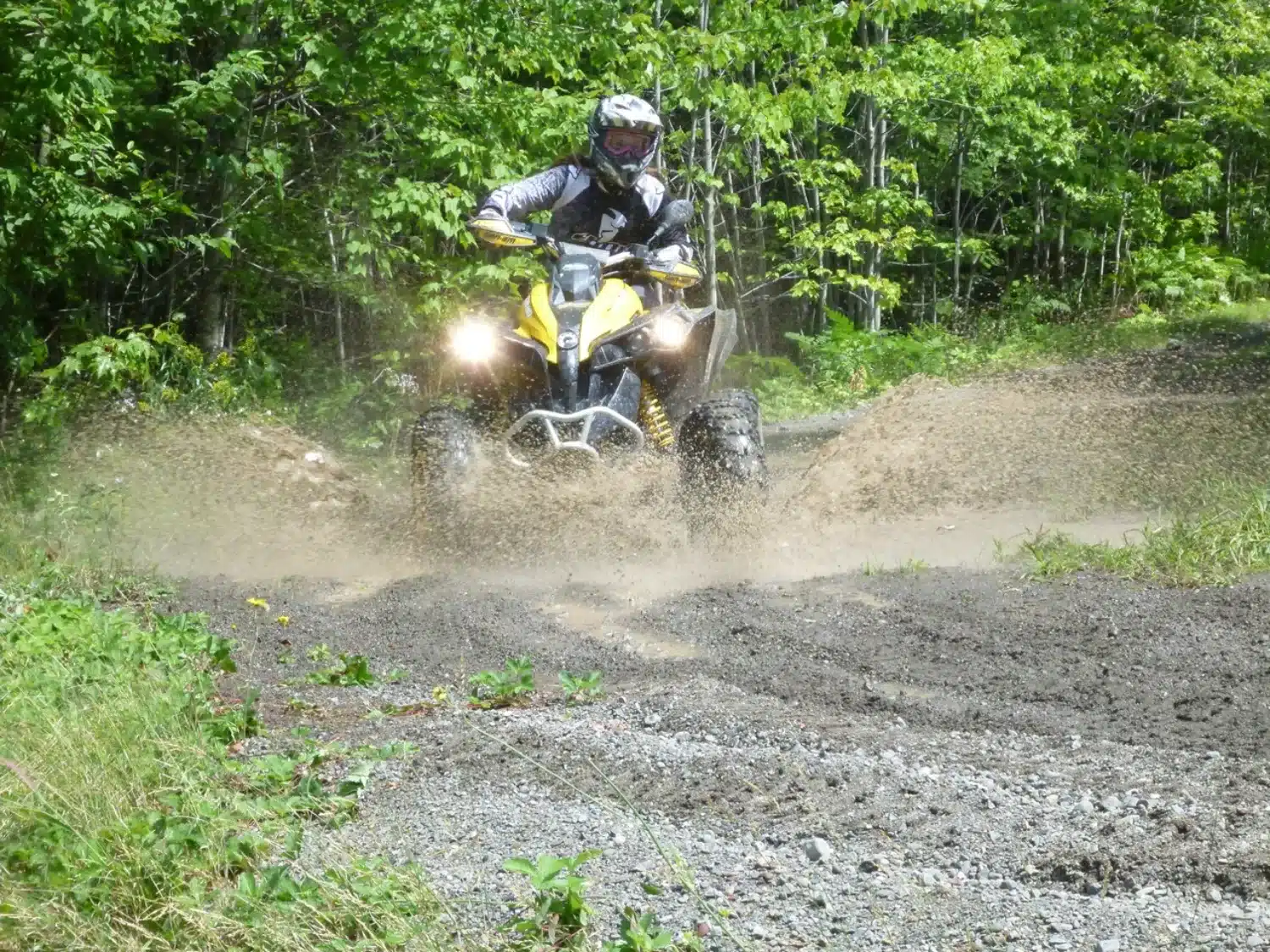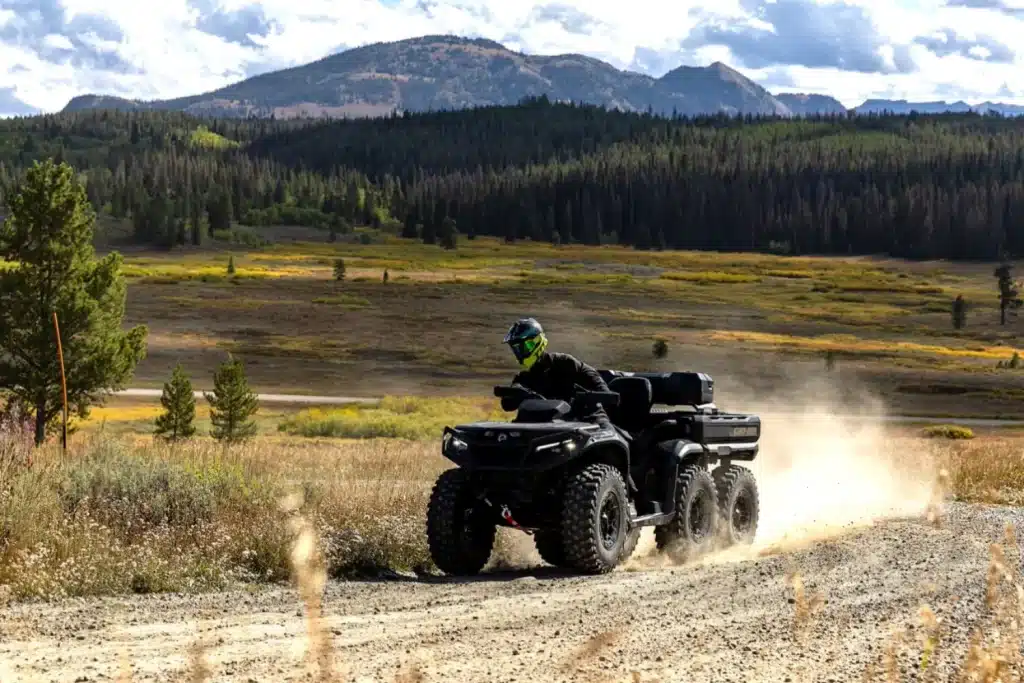Solo quad or side-by-side touring is perfectly possible, but it also entails its share of risks. Ideally, two or more off-road vehicles are recommended. However, there are times when you don’t have anyone to go with you and you just want to do it. In such cases, rigorous preparation is essential to ensure your safety.
Even when well prepared, the unexpected can happen: a breakdown, an injury, or an unplanned detour. Anticipating these situations increases your chances of returning safely.
The key is to be autonomous, but never reckless. It’s better to plan too much than not enough: that’s what makes all the difference when you’re off on an adventure on your own.
Mechanical check-up before and after a ride
The best time to carry out a thorough mechanical check on an off-road vehicle is just after you’ve completed a ride. That way, the vehicle will be ready for the next expedition. Of course, you’ll need to wash the vehicle first, to get a better view of the parts to be checked.
Then, visually inspect all components for cracks and anomalies.
You should also check the condition of the wheel bearings, the universal joints on the drive shaft and the bearings on the suspension systems, depending on the model. Normally, there should be no play.
Then, just before setting off on your ride, check tire pressure and adjust if necessary.
For more details on what to look for when doing a mechanical check, see this article .
Here are two examples where visual inspections helped avert a trail disaster. This happened at different times. First, the rear suspension table was broken:
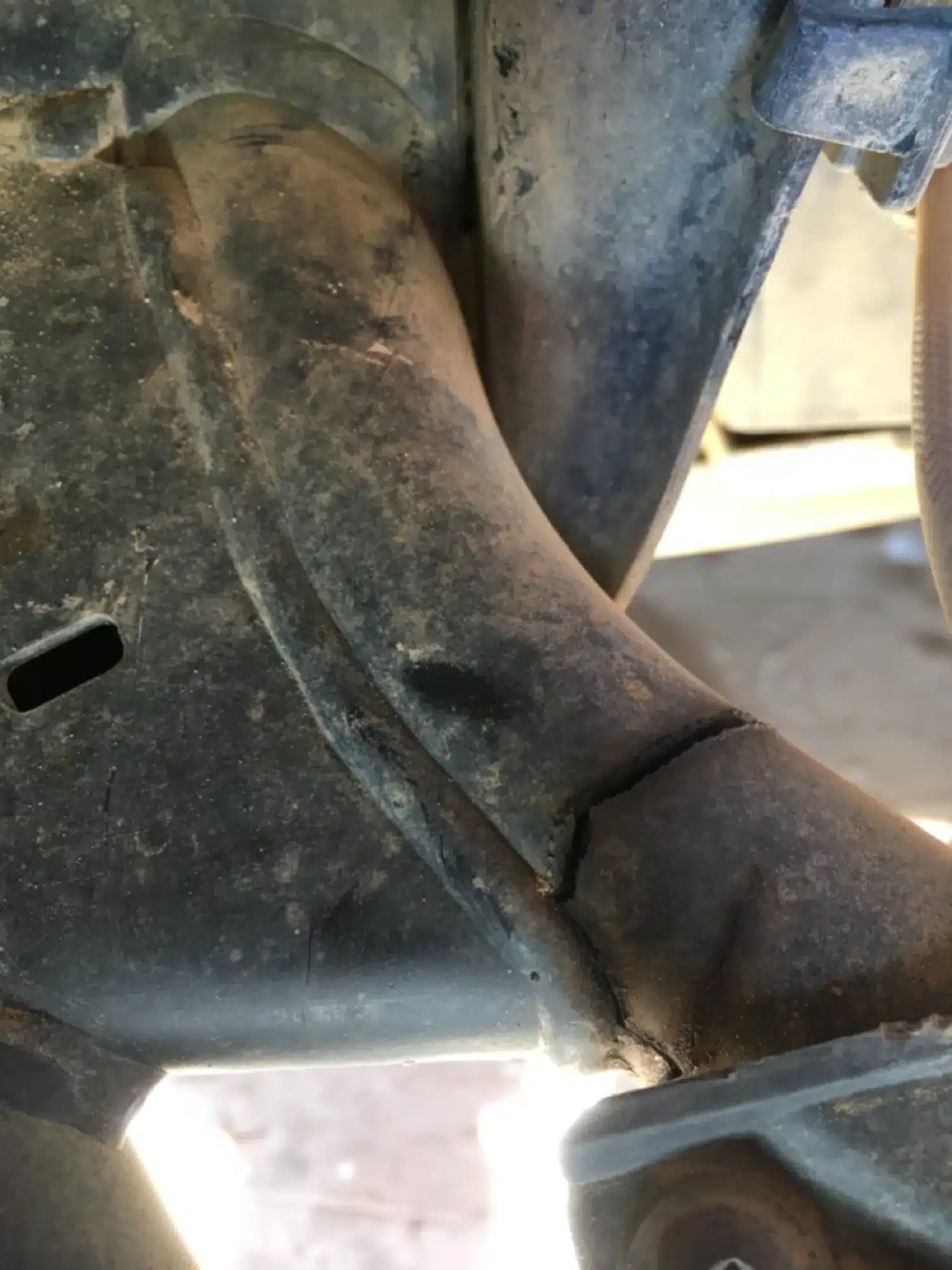
The second, the crack had appeared on the steering pivot:
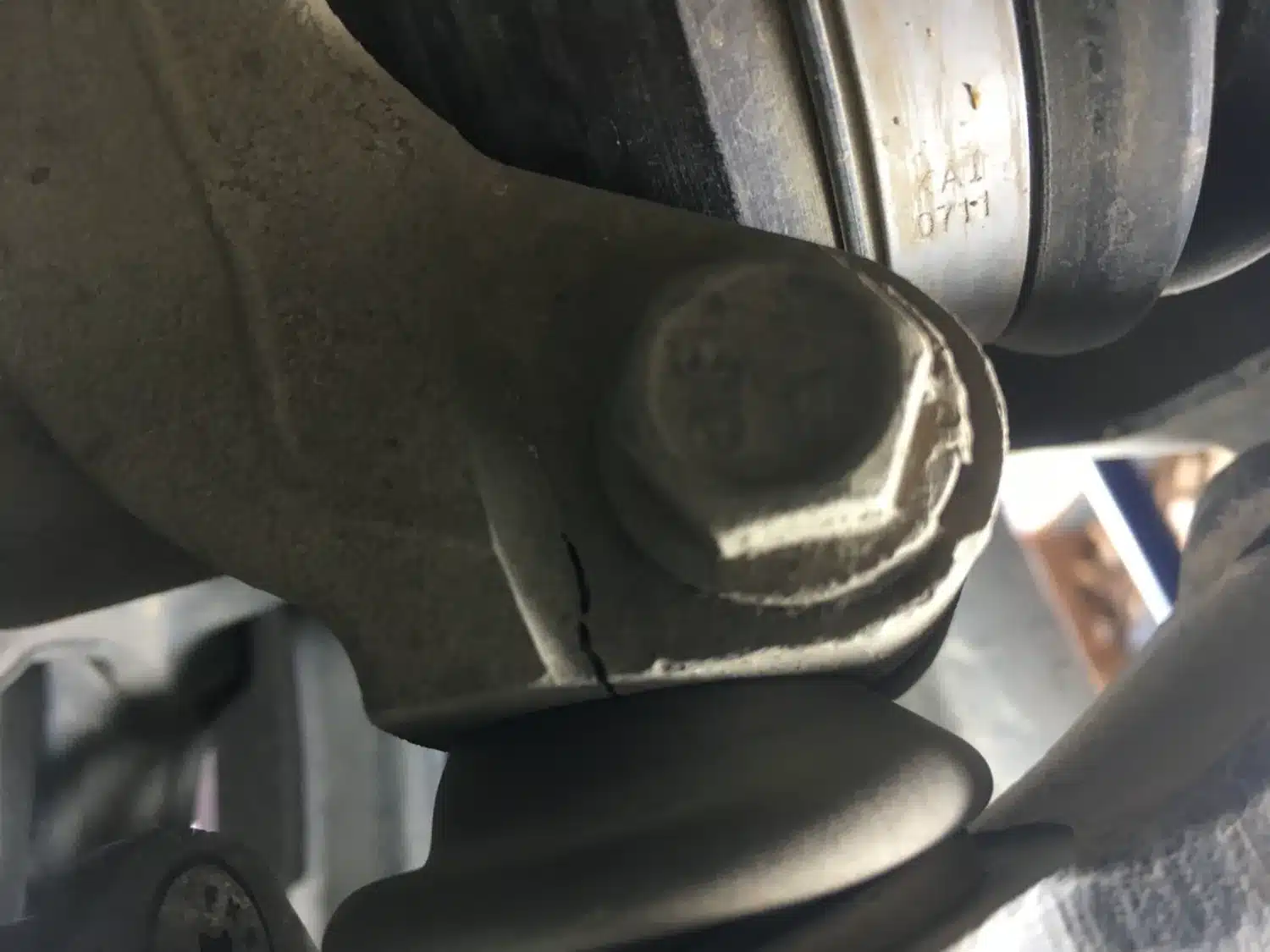
What to wear
Not only can the weather be unpredictable, but you also need to consider the possibility of spending the night in the woods.
It’s vital to be well equipped with clothing such as coats and raincoats to protect against rain and/or wind. You also need warm underlays, such as fleece jackets and pants. There are different thicknesses for different seasons. And last but not least, gloves and a toque, even in summer.
Hot pads are very practical, especially those designed for hands, back and feet. Those used for the back can also be worn inside the coat, on the front, over the upper body, on a rainy autumn day. This keeps you nice and warm, while eliminating interior humidity.

Tools and parts
Here’s a minimum list of tools and parts to have on your off-road vehicle:
- A ratchet and socket set
- A puncture repair kit
- A screwdriver set and a variety of pliers, including vise-grips
- Electrical tape and wire
- Diamond jack
- Electric impact wrench
- Portable saw
- Portable metal shovel
- Ratchet straps and Tie-wraps
- Spare belts and, on some models, the tool needed to spread the pulleys
Here’s a short list of things to carry with you at all times:
- Small pocketknife
- Matches or lighter
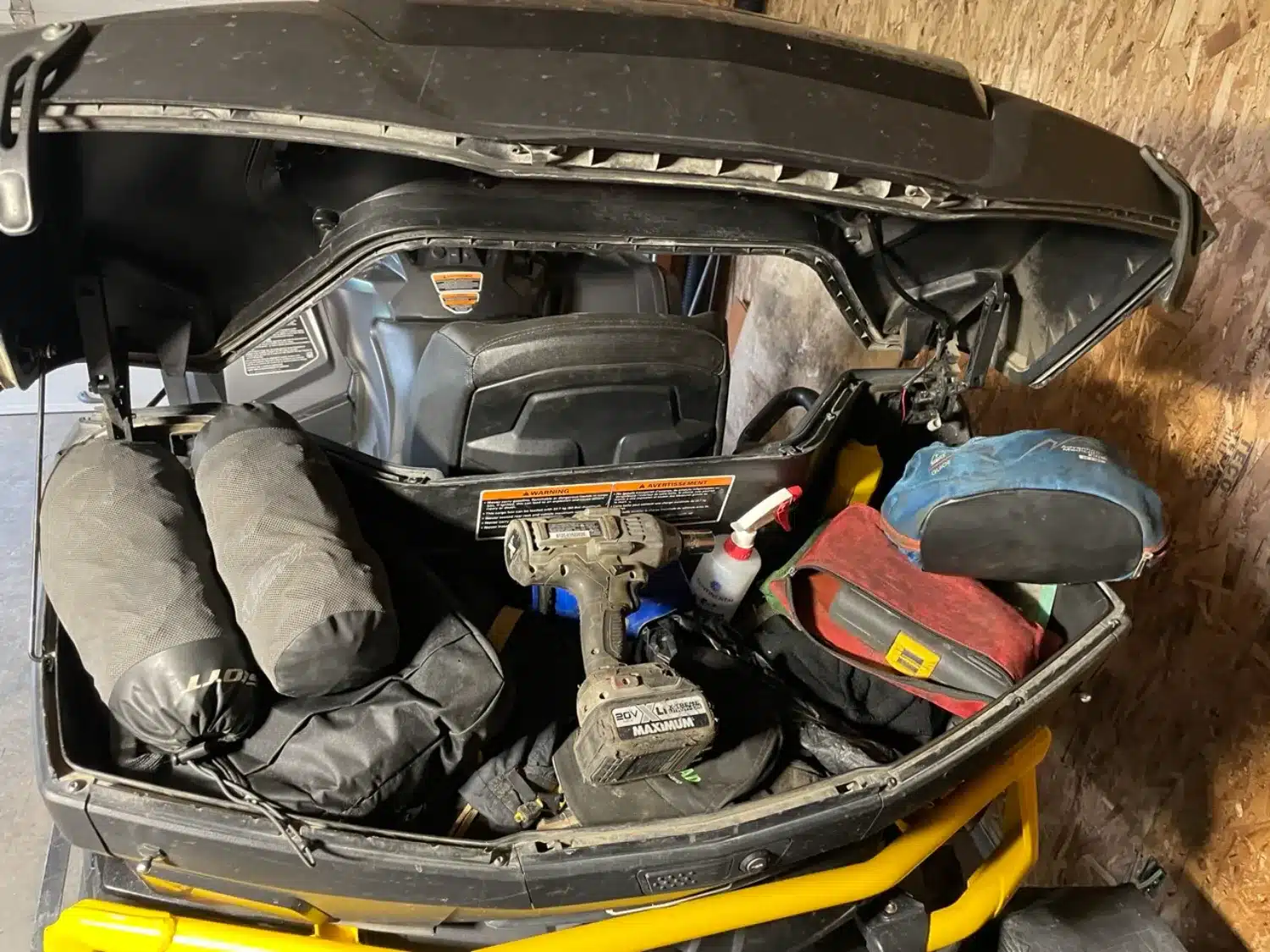
Means of communication
When you find yourself in a place where there’s no cellular network, it’s strongly recommended that you equip yourself with satellite communications. It has recently become possible to communicate via satellite with an Apple iPhone cell phone, provided certain technical criteria are met. For the moment, only text messages are possible, and you can reach anyone.
Other technologies include InReach, Inmarsat and Iridium. Some technologies are more affordable than others. What’s more, it’s important to make a list of contacts before you leave. It’s always a good idea to know who you want to reach when you need help, depending on the situation.
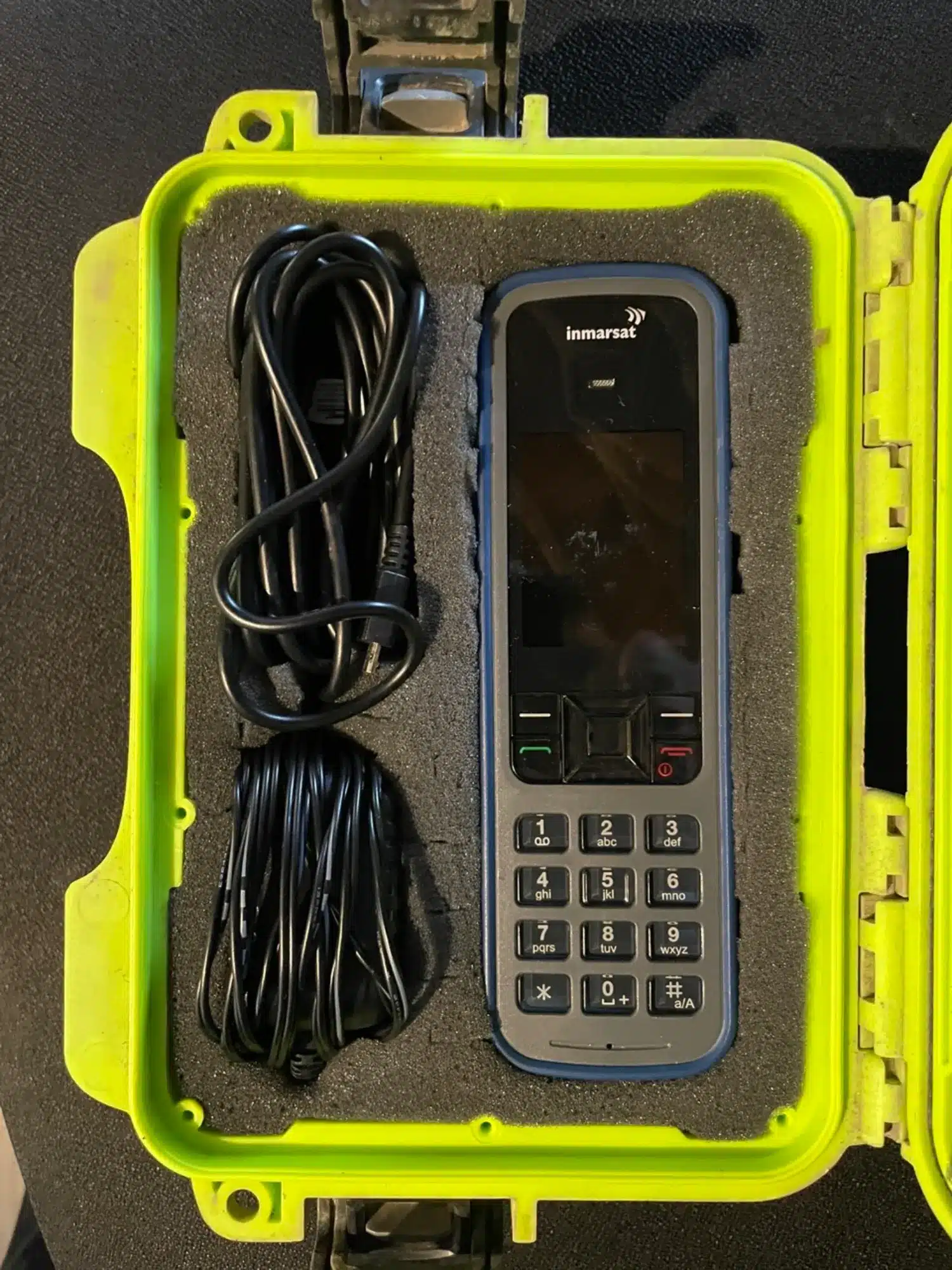
Fitness and food
In certain situations, you may need to use physical force. That’s why it’s so important to be in good physical shape, both for the effort involved and to be able to walk for long periods in difficult conditions. In addition, it’s important to take breaks to avoid injury, heat exhaustion and shortness of breath.
Last but not least, take along energy-boosting snacks that keep for a long time, such as protein bars, nuts and so on. And, very importantly, bring at least 1 liter of water. It can not only be used to quench your thirst, but also to refill the radiator in case of coolant loss.
True story
Recently, I wanted to go exploring in the Charlevoix region. My girlfriend, Julie, was supposed to come with me, but something came up at the last minute. So I decided to go alone.
Before leaving
Before I left, I sent Julie a planned itinerary package. As a result, even if I see an unplanned trail along the way that might be worth checking out. I won’t go and see it, to make life easier for the rescue team if they have to go looking for me.
So, being equipped with a satellite phone, I’ve made myself a list of numbers of people to contact in case of need.
I’m ready and raring to go!
First mechanical incident
About 20 kilometers after I left the main road, a sweet smell caught my eye in the middle of the forest. This kind of smell is often a sign that coolant is escaping through the overflow pipe, usually due to engine overheating. Although the temperature warning light isn’t on yet, it’s already reading 105°C. As a precaution, I immediately switch off the engine, leaving the ignition on to hear if the fan is running. Total silence.
I try to plug it directly into the 12V socket, but nothing happens. Trying to turn the fan with my hands, I feel a strong resistance. By forcing them slightly, miracle: the fan suddenly starts up at full speed. A word of warning here: always switch off the ATV or unplug the fan before touching it, because when it goes off, it can surprise you and hurt your fingers. I suspect a build-up of rust or dirt in the fan motor. To be on the safe side, I plan to replace it when I get back. In the meantime, it’s running fine, so I continue on my way and enjoy the scenery, including the magnificent falls.
Second mechanical problem
Further on, as I explore a more rugged and rocky trail, I try to climb a slope, avoiding the large rocks. On the way up, the right front wheel hits a rock instead of going over it. Suddenly, the ATV starts to move forward on its own, and despite my attempts to brake, the wheels keep turning. I immediately activate the kill switch to stop the engine.
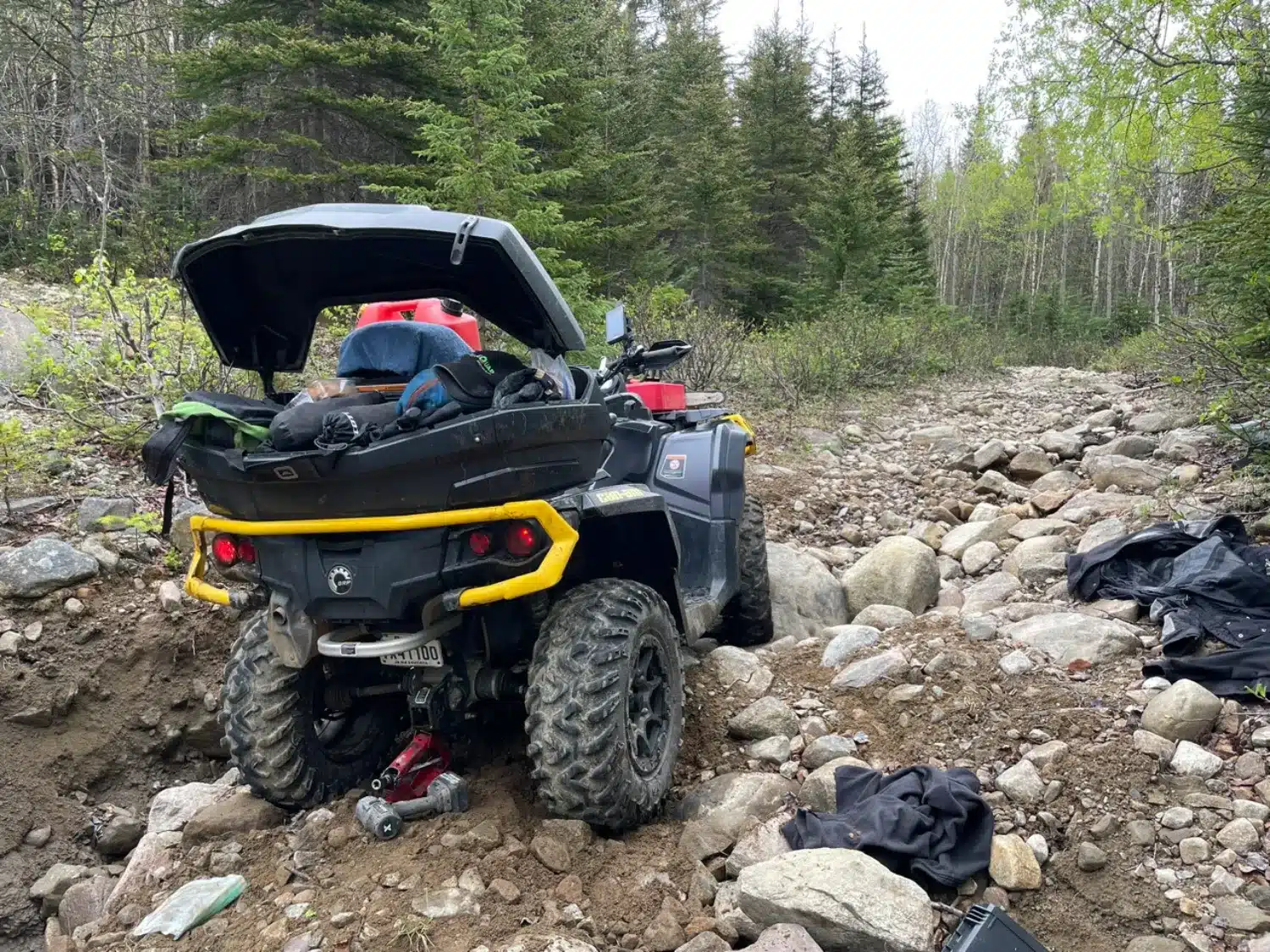
I try to shift into neutral, but without success: the wheels are under tension. I get out the metal mini-excavator, jack and impact wrench to lift the ATV and free the wheels. After a few tries, I succeed and put it in neutral. I restart the ATV, do a few acceleration tests: everything seems normal. I put it in “H” mode, but as soon as the wheels turn, it stalls. I suspect a problem with the pulley system.
That’s when I decide to turn back. Unable to return to neutral, I repeat the lifting operation. Once the wheels are free and in neutral, I slowly reverse the ATV by gravity, controlling the speed with the brakes.
Having reached a small plateau, it’s now time to put the vehicle in reverse. On this rocky terrain, the maneuver is arduous. I use the shovel to clear away the stones and smooth out the ground a little. After several breaks to rest from pushing and pulling the quad, I try to restart it. I put it in “H”, but it still stalls. The battery is starting to weaken with every attempt.
I repeat the procedure one last time to free the wheels, manage to clutch in neutral, and run the engine at around 60% power for 20 minutes to recharge the battery. Meanwhile, I continue to clear and level the path ahead with a metal shovel.
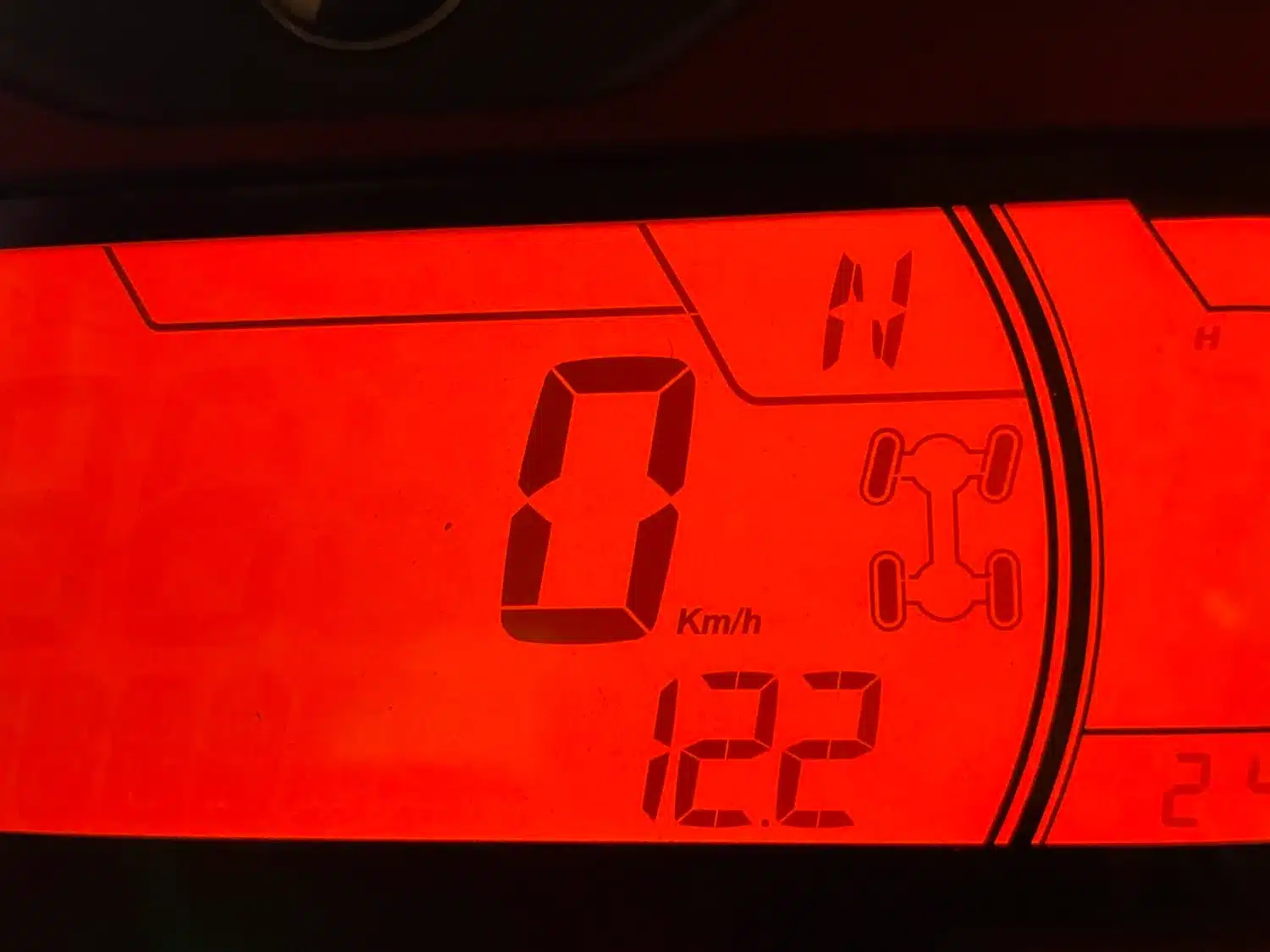
Finally, after all that work, I pack up my tools, say a little prayer, visualize the path ahead and turn on the “H”. This time, it takes off! I made it back to the parking lot after a journey of just over 30 km.
Conclusion
Going motoring alone requires rigorous preparation and constant vigilance. Whether it’s checking your vehicle, dressing appropriately or equipping yourself with tools and means of communication, every detail counts. Mechanical or physical mishaps can occur at any time. By anticipating and respecting your limits, you maximize your chances of returning safe and sound. Solo adventure is possible, but never at the expense of safety and caution.

